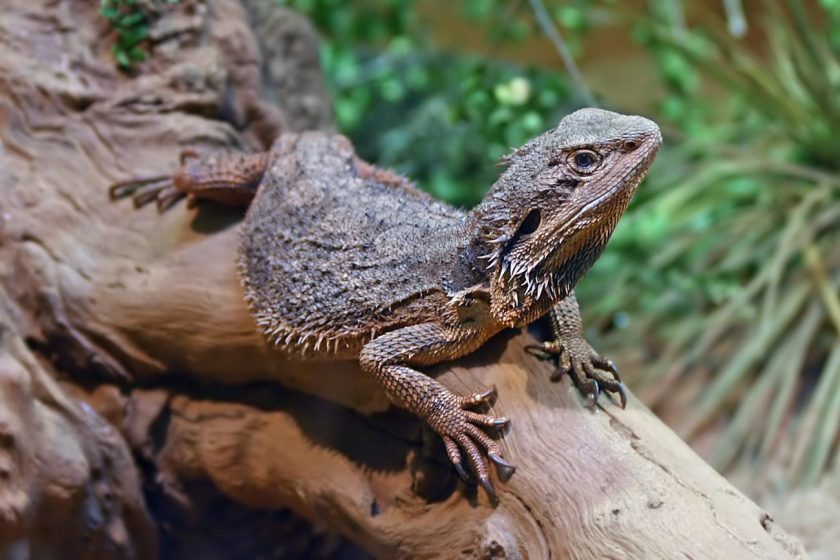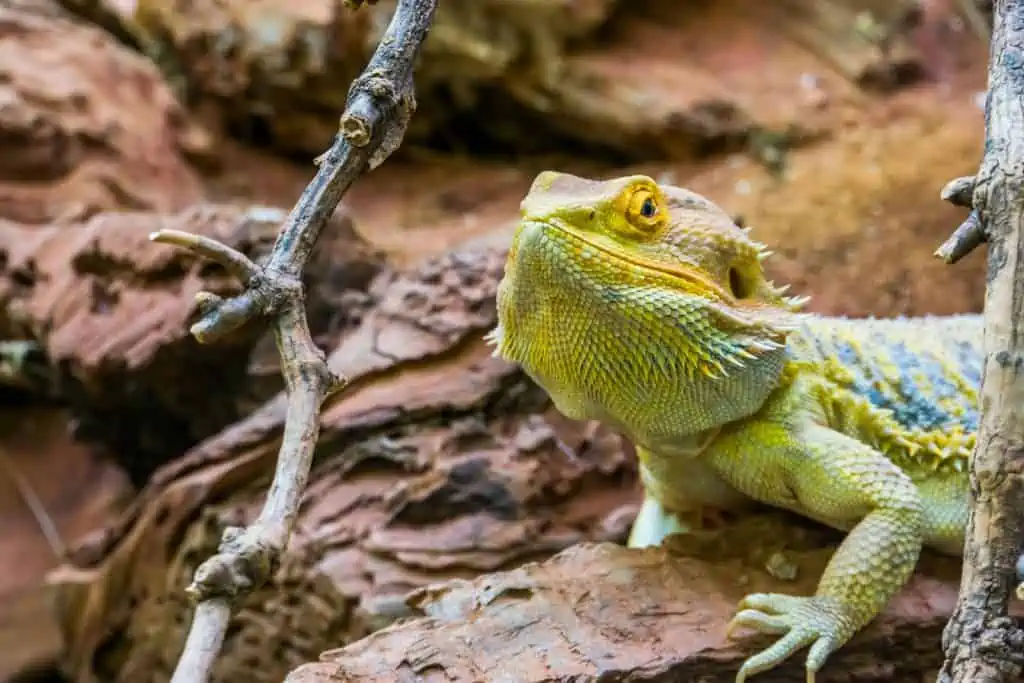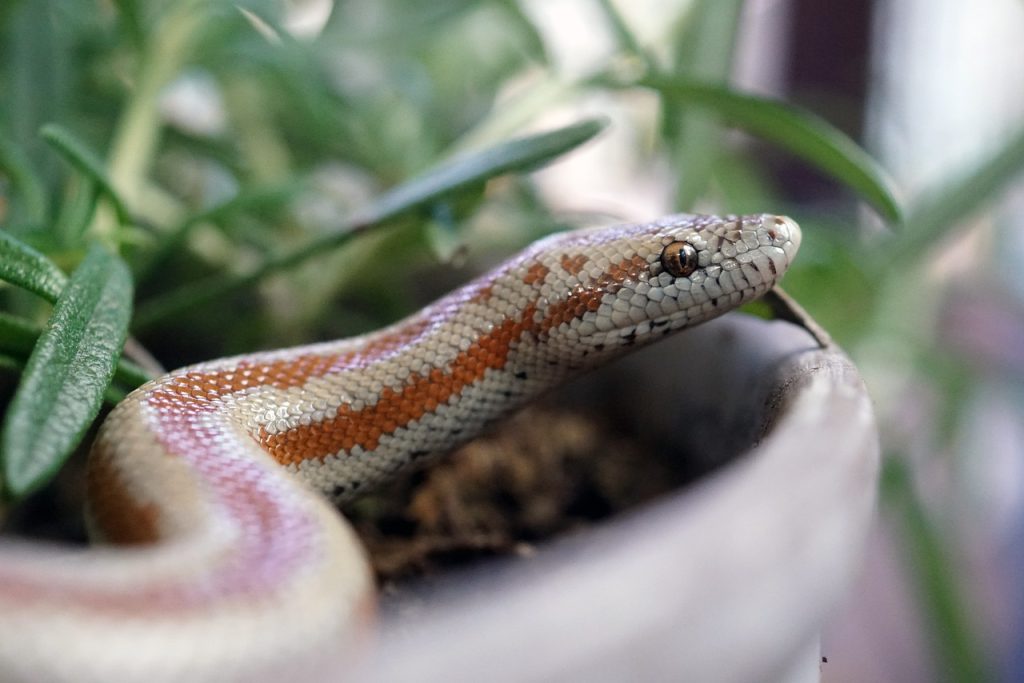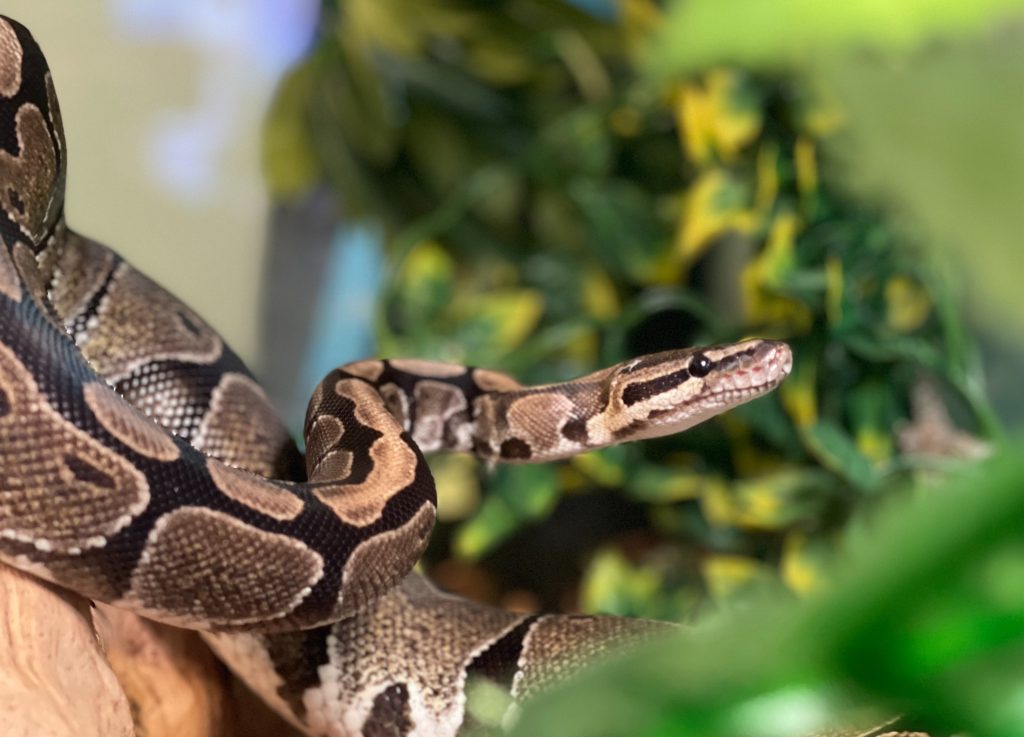Reptiles are overwhelmingly fascinating; just their ways and the places they live can make us curious! Many people have them as pets and love them. I’ve had the privilege of caring for, and trust me, each one is special. Think about a bearded dragon sitting with you or watching a colorful turtle swim around; it’s like a whole new world!
When you get a reptile, it’s not just a pet. It’s like adding a new family member; some can be with you for a long time!
But there are some important things you should think about before getting one:
- Where they’ll live
- How much it’ll cost
- Having a backup in case of power cuts
- What they eat
- How long they’ll live
- How they behave
Are you excited to find out which reptile might be right for you? Let’s dive in and see!
1. Bearded Dragon
| Feature | Information |
| Scientific Name | Pogona vitticeps |
| Size | Approximately 1.3 to 2 feet |
| Lifespan | 8 to 10 years |
| Best For | Both children and beginners |
| Average Adult Weight | Approximately 280 to 500 grams |
Bearded dragons are a top pick as a reptile pet, not just because they’re peaceful and easy to care for but also because they genuinely connect with those around them. Despite their spiky appearance, which might make them seem intimidating, they’re surprisingly gentle, offering pleasant interactions. They’re most active during the day, and it’s especially fun watching them eating their meals. To be happy, they need specific lighting, full-spectrum, to be precise, and particular temperature settings in their living space.
Cons
- They have a sizable appetite. It means they produce a lot of waste, so you’ll need to clean their home daily.
- Another thing, they’ll need a tank, like 55 gallons or even more. Plus, their food preferences change as they age, which can be a tad tricky for those new to Reptiles.
2. Green Anole
| Feature | Information |
| Scientific Name | Anolis carolinensis |
| Size | 0.4 – 0.6 feet ( 5-8 inches) |
| Average Lifespan | 5 years |
| Best For | Both children and beginners |
| Average Adult Weight | 0.002 – 0.006 kg (2 – 6 grams) |
Often called the “American chameleons,” Green anoles are agile little reptiles. And here’s a remarkable fact: they can change colors, shifting from a basic brown to a bright green, depending on their mood. For those who want a pet that’s easy on the wallet and straightforward to feed, since they mainly eat insects and occasional mealworm treats, Green anoles are a solid pick. But, they have specific needs: they love tall enclosures with lots of plants because they naturally live in trees, and they’re happiest when their home feels warm and moist, just like their natural habitat.
Cons
- They can get stressed out if you handle them too much.
- Requires consistent and specific terrarium maintenance.
3. Leopard Gecko
| Feature | Information |
| Scientific Name | Eublepharis macularius |
| Size | 0.5 – 0.9 feet (7-11 inches) |
| Lifespan | 10 – 20 years |
| Best For | Both children and beginners |
| Average Adult Weight | 0.05 – 0.08 kg (50 – 80 grams) |
Leopard Geckos are cool reptiles, not just because of their unique yellow-spotted look. Their low-maintenance nature makes them especially popular, making them one of the best beginner pet reptiles. If you live in a small space, this is your pet! They need a glass home with a few essentials: a heating pad, hide box, and primary bowls. Regarding food, they mostly munch on insects, especially crickets, mealworms, and wax worms.
Cons
- Due to their small size, they need careful, gentle hands.
- They love insects, so you must be okay with an insect-heavy diet for them.
🦎 Read more: The best small pet reptiles
4. Ackies Monitor Lizard
| Feature | Information |
| Scientific Name | Varanus acanthurus |
| Size in Feet | 2 – 2.3 |
| Lifespan | 15 – 20 years |
| Best For | Experts |
| Average Adult Weight | 0.14 – 0.34 kg (141 to 340 grams) |
The Ackie monitor resembles a mini Komodo dragon. These reptiles originally come from Australia, and even though they’re on the smaller side compared to other monitors, they still need a lot of room. Because in the wild, they’re used to spacious spaces. And just like their natural homes, they need heat lamps to bask under. When they are hungry, they love to eat a mix of roaches, feeder mice, crickets, and mealworms. They’re an exotic addition to homes and known for their striking appearance, though they demand thorough research before adoption due to less prevalent pet ownership.
Cons
- It’s not a pet for the first-timers or young kids.
- Getting their home ready and keeping them happy can be a bit costly.
🐍 Looking for ideal reptiles for children? Check our list of the best pet reptiles for kids
5. Crested Gecko
| Feature | Information |
| Scientific Name | Correlophus ciliatus |
| Size | 0.6 – 0.8 feet (8-10 inches) |
| Lifespan | Up to 15 years |
| Best For | Both children and beginners |
| Average Adult Weight | 0.042 to 0.045 kg (42-25 grams) |
Native to islands close to Australia, Crested Geckos are real climbers, almost like they’ve got a passion for heights! If you’ve got a tight space, these lizards fit right in, especially if you set up their enclosure in vertical directions. Their most fascinating feature is that they can eat both insects and plant-based diets. They’re also easy-going pets because you don’t have to worry about specific lights or heating for them.
Cons
- They’re a bit sensitive, so you’ve got to be extremely careful when handling them.
- They love to climb, so their home needs climbing structures they can scramble up on.
6. Corn Snake
| Feature | Information |
| Scientific Name | Pantherophis guttatus |
| Size in Feet | 2 to 6 feet (24 to 72 inches) |
| Lifespan | Up to 23 years or more |
| Best For | Both children and beginners |
| Average Adult Weight | 0.45 to 1.3 kg (454 to 1361 grams) |
Corn snakes, with their striking colors and friendly nature, are often the first pick for people who’ve never had a snake. These snakes come from the Eastern United States, so to make them feel at home, it’s best to have a glass tank that looks and feels like that place, complete with different areas and branches for them to explore. When you get to know them, you’ll realize they’re usually quite open to being handled and aren’t too hard to care for. Mostly, they eat rodents.
Cons
- Some snakes can grow long, almost reaching 6 feet, so they’ll need a spacious home.
- They need their environment to stay consistent to be healthy and happy.
7. Rosy Boa
| Feature | Information |
| Scientific Name | Charina trivirgata |
| Size in Feet | Upto 4 feet (48 inches) |
| Lifespan | Up to 30 years |
| Best For | Both children and beginners |
| Average Adult Weight | 0.3-0.6 kg (300-600 grams) |
Hailing from places like the Southwestern United States and Mexico, Rosy boas stand out because of their unique, long stripes. Even if they look intimidating, they’re highly friendly and don’t have venom. They like simple, dry places to live in, just like the dry areas they’re from. They love to eat well in a home, but you might sometimes find them hiding under their tank; it’s their way of camouflage. And the best part is they don’t need special lighting, making looking after them more manageable.
Cons
- Their preference for arid conditions means consistent monitoring of humidity.
- They hide a lot, so sometimes spotting them in their homes is hard.
8. Ball Python
| Feature | Information |
| Scientific Name | Python regius |
| Size in Feet | 2 to 5 feet (24-60 inches) |
| Lifespan | 20 to 30 years |
| Best For | Beginners and children |
| Average Adult Weight | Approximately 1.2 to 1.8 kilograms |
Ball Pythons, native to Sub-saharan Africa, are admired not just for their manageable size but also for their distinctive looks. They appeal to snake lovers because of how tame and easy-going they are. Housing them doesn’t require a massive setup; a tank between 30 to 40 gallons, filled with a good substrate and some hiding spots, usually does the trick. They’re pretty laid-back creatures, and when it comes to food, they’re relatively uncomplicated, preferring mainly rodents.
Cons
- They go through dormancy periods where they might not eat.
- Because they’re from warm places, they need slightly higher temperatures than some other snakes.
9. King Snake
| Feature | Information |
| Scientific Name | Lampropeltis |
| Size in Feet | 3.3 to 5 feet (39.6-60 inches) |
| Lifespan | 20+ years |
| Best For | Beginners |
| Average Adult Weight | ~1.5 kilograms (~1500 grams) |
King Snakes are often called the “kings among snakes,” primarily due to their capability to prey on other snakes. With eye-catching bands of bright yellow and deep black, King Snakes are truly a sight to behold. Perfectly fitting for apartment living, given that they’re creatures of the night, they usually stay hidden, cozying up in their favorite spots. They don’t take up much space because of their average size, and if you handle them regularly, they become more tame, becoming friendly companions.
Cons
- They tend to eat other snakes, so they need solitary confinement.
- If they get agitated, they might give off a kind of stinky scent.
10. Russian Tortoise
| Feature | Information |
| Scientific Name | Agrionemys horsfieldii |
| Size | 0.66 – 0.83 feet (8 to 10 inches) |
| Lifespan | 40+ years |
| Best For | Children and Beginners |
| Avg. Adult Weight | 0.2 – 1.1 kg (200 – 1100 grams) |
Russian tortoises are easily identifiable by their distinct dome-shaped shell and little, stubby legs. People, especially children, love them because they’re gentle and move slowly. Although they don’t need much room to live in, they have some special requirements for eating green leaves and need ultraviolet light exposure. They recognize their owners, and even displaying “begging” behavior for food makes them particularly engaging.
Cons
- A big issue is that most are caught in the wild so they might have harmful parasites.
- You need to be precise with their food; too much food isn’t good.
- Needs consistent full-spectrum lighting.
11. Painted Turtle
| Feature | Information |
| Scientific Name | Chrysemys picta |
| Size | 0.2 – 0.8 feet (2.5-10 inches) |
| Lifespan | ~40 years |
| Best For | Beginners |
| Avg. Adult Weight | 0.3-0.5 kg (300-500 grams) |
If you’ve ever seen a painted turtle, you’ll understand that their name fits them perfectly; they have colorful and pretty designs on their shells! They are active swimmers who need a big tank with space and a dry resting place. Because they’re so active, their water gets dirty quickly, so they need good filters. They eat various things, like turtle food from the store, green leaves, small fish, insects, and even shrimp.
Cons
- You’ll have to invest in a big tank, which can cost a bit.
- The risk of Salmonella necessitates frequent hand washing after handling.
What to Consider When Adopting a Pet Reptile?
Bringing a pet reptile into your home is a big deal and requires careful thought and preparation. Here are the key factors to consider:
1. Living Conditions
Reptiles enjoy basking in warmth, so you must determine if you can create a cozy and spacious habitat that suits their needs.
2. Financial Aspect
Though they might not break the bank initially, reptiles come with recurring costs such as setting up their living space, the type of substrate they need, their meals, and visits to the vet.
3. Backup Power
In places where it gets pretty cold, a power outage could be a problem. You need a plan to keep your reptile’s home warm and adequately lighted, maintaining the right humidity level.
4. Feeding Habits
Reptiles have diverse diets; some, like the Russian tortoise, munch on veggies, while others might need live insects or mice. You should be okay with their food preferences and ensure a steady supply.
5. Commitment Over Time
Remember, some reptiles can be around for over two decades. Make sure you’re up for the long-term commitment.
6. Nature and Behavior
Although many reptiles are okay with being handled, they usually aren’t as loving as other pets. If you’re looking for a cuddly companion, you might want to think twice about a reptile.
Responsibility Is Owed
Although different from our usual pets, reptiles bring a fresh and intriguing touch to our lives. Whether you’re thinking about a climber like the Crested Gecko or a creature that prefers staying grounded, such as the Russian Tortoise, always put their health first. When you set up the right living conditions and serve them a nutritious diet, you get a happy reptile and form a deep bond lasting for many years.
Do you have any questions about keeping a reptile as a pet? Or maybe there’s a particular reptile you’ve got your eye on? Share your queries and ideas in the comment section below.













